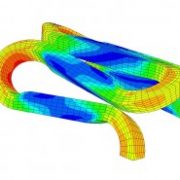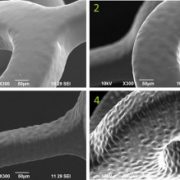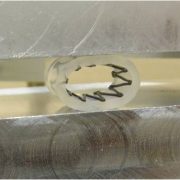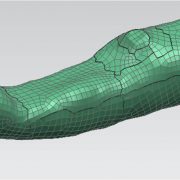FEA and Experimental Evaluation of Superelastic Stent
The mechanical properties of Nitinol stents are normally evaluated experimentally due to complexities resulting from large deformations and material nonlinearity. Despite difficulties associated with Finite Element Analysis (FEA), the success of computational analysis in combination with experimental study leads to better understanding of stent performance. This paper compares experimentally evaluated radial resistive forces of a Nitinol stent to predictions based on nonlinear FEA. The FEA was performed using ABAQUS with two user material subroutines independently developed specifically for Nitinol. Good agreements between the FEA and the experiments are shown for both user material subroutines.
In this work I debuted the ABAQUS user material subroutine that we developed in my lab for modeling noth superelastic and shape memory Nitinol applications. It is based on the Boyd-Lagoudas formulation which is a phenominalogical thermodynamic model that we implemented for industrial use in medical device validation analyses.
You can download this paper on superelastic stents, radial force, nonlinear FEA, ABAQUS and user masterial subroutines that was originally published in the SMST 2003 Proceedings:










